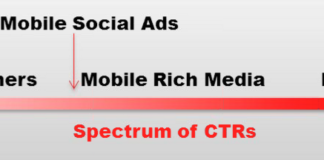What do you think of the idea of a secure, internal CafePharma-type Web site where sales reps can share their triumphs and failures, vote on who has the best ideas, discuss issues, and get feedback from their managers that everyone can see and learn from?
What about sales reps collaborating with marketers via a wiki tool that allows the reps to edit and comment upon detail aids, talking points, and other materials that sales reps use when selling to physicians?
These ideas and more were discussed in today’s Pharma Marketing Talk podcast entitled “Web 2.0 Tools for Sales Force Effectiveness” (listen to the audio archive here). In that podcast, I interview Joe Miles, Project Director, EyeforPharma Conferences. Joe is organizing a Webinar on this topic for September 19, 2007 (see “SFE: Collective Intelligence Webinar“).
Let me just share some thoughts about collaboration between marketing and sales and how Web 2.0 tools may be used enhance that collaboration.
More often than not, there’s no love lost between the sales and marketing departments of pharmaceutical — and other — companies. Marketing produces the detail aids and other materials and sales dutifully use them — at least they say they use them. More often than not the reps toss ’em or let them rot in their garages! In many cases, the suggested sales verbiage offered by marketers does not resonate with the customer.
I wrote about this problem some time ago in Pharma Marketing News (see “Marketing’s Role in Limiting Physician Access and What to Do About It“). I that article, Gerald J. Acuff Jr., Chief Executive Officer, Delta Point, a sales agency that enhances the effectiveness of sales representatives, pointed out a couple of problems that prevent marketing from preparing the best sales aids:
- Not truly understanding the difference between a marketing message and a sales message. The copy that accompanies sales aids, for example, is not written with an understanding of how sales are made; and
- Providing to the field suggested sales language that “closes down” customers. Examples of verbiage that signals the wrong thing.
I won’t get into the details here. You can read the article to learn more.
Another common problem caused by the siloed boundary between the field force and marketing is that sales reps deliver the same highly-scripted blanket messages to all of their physician clients. How can a siloed pharmaceutical company create an organizational structure and process where marketing and sales managers work more closely together?
You can hire experts like Mr. Acuff to correct these problems, but some pharmaceutical companies are turning to Web 2.0 tools to leverage the “wisdom of crowds,” which in this case are the thousands of sales reps within the organization.
At least that is what Joe Miles and some of the experts that will speak at the eyeforpharma webinar think.
To illustrate the wisdom of crowds, Joe asked a recent conference audience to guess the number of jelly beans in a jar. I forget the exact range of the guesses — listen to the podcast to find out — but the average was extremely close to the actual number.
Can that type of crowd “wisdom” be applied to real world problems and specifically to the problems mentioned above?
I can imagine hundreds of reps tweaking and editing sales aid copy and voting on which version is the best, but I have a problem imagining marketing pros taking them seriously. All the social networking tools in the world cannot make up for a dysfunctional organization or overcome tradition, which says that marketing is responsible for the words, reps are responsible for sticking to the script.
But, hey! I could be wrong — it wouldn’t be the first time. I look forward, therefore, to eyeforpharma’s webinar, which is supposed to feature case studies from the real world! Hope to see you there!









![6 Digital Tools at the Center of Healthcare Digitalization [INFOGRAPHIC]](http://ec2-54-175-84-28.compute-1.amazonaws.com/pharma-mkting.com/wp-content/uploads/2021/04/6DigitalTools_600px-100x70.jpg)




